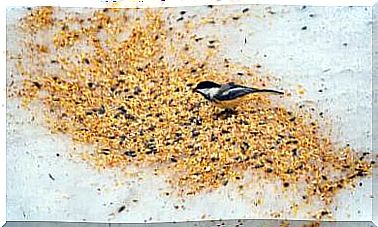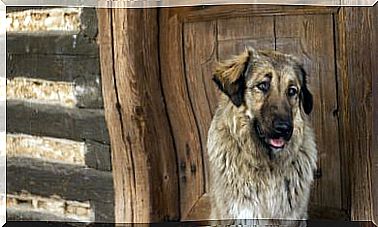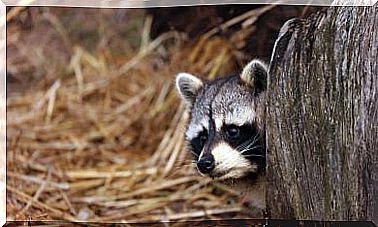Eusociety And Ant Reproduction
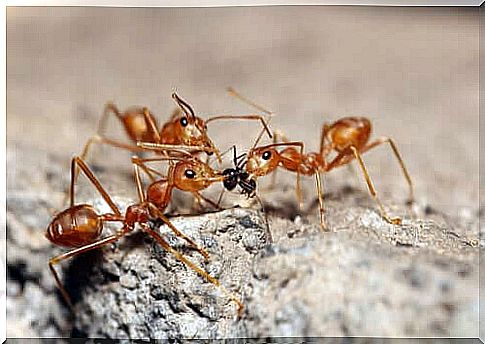
Ants are among the most common insects in the world, as they inhabit every continent except Antarctica. Undoubtedly, this colonization phenomenon is related to the complex social organization of these insects: ants live in an eusociety, as we will see below, and managed to develop different relationships with other animals and with nature in order to survive.
Currently, more than 14,000 species of ants are recognized, although there may be many more to be discovered.
What is eusociety?
Eusociety is a form of social organization based on caste: it consists of the most complex structure observed in the animal kingdom. In it, we can observe a reproductive and an infertile class, which is known as the worker.
Eusocial structures are only observed in a few insects, such as bees, wasps and ants. However, some crustaceans and the naked mole rat also organize themselves in this way.
How do ants organize themselves into eusociety?
In eusociety there is always the figure of the queen, who is the reproductive/fertile female. In general, each community has a single queen, although in some ant species several queens can live in the same anthill.
The queen is the leader and great mother of all individuals in the eusocial community, which is governed by a kind of matriarchy. Their central role in the community is to transmit their privileged genetic material to their descendants, which keeps their species strong and able to survive.
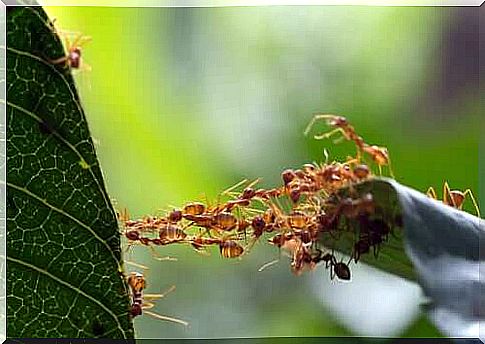
Infertile females (workers) are always daughters of the queen, not her sisters. Its function is to develop both the basic work for the preservation of the community and the care of the larvae, the construction and maintenance of the nest, and the collection of food.
In the ant society there is also the figure of the “soldier ant”. That is, those individuals who are dedicated to protecting and defending the anthill from any kind of threat. It is an intermediate caste, in relation to both its size and social class.
In short, the ant society is divided into three castes: the queen, the soldiers and the workers. For an anthill to be complete, with all its developed varieties, it takes around four years.
How do ants reproduce?
The ant’s breeding season varies according to the species and its natural habitat. Ants that live in tropical climates can lay eggs throughout the year. However, those that inhabit temperate or cold zones begin to reproduce with the arrival of spring.
Furthermore, ants adapted to very cold regions tend to maintain a kind of winter sleep to survive the cold. With the arrival of spring, the individuals in the anthill “wake up” and resume their normal activities.
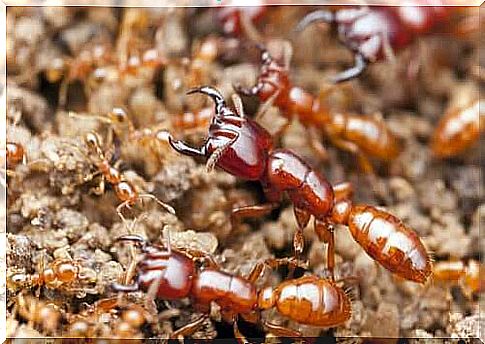
But how do ants reproduce? In practice, the queen ant can lay unfertilized eggs throughout its lifetime. During the breeding season, a queen can lay thousands of eggs daily.
These eggs can be born soldiers or workers, depending on the type of food and hormones that are provided in their first stage of development. These two castes are composed of haploid individuals, that is, they only have half the total chromosomes of their species.
How is a queen ant born?
Only one queen can give rise to another queen, since from it all the individuals in her community are generated. When she detects the need to give rise to a new queen, the current queen ant lays special eggs, which are mediated by certain hormones.
Interestingly, these eggs originate not only the future queen, but also male ants. Unlike workers and soldiers, males are diploid individuals, which contain the total number of chromosomes of their species. This is only possible because the eggs from which the males are born have been fertilized.
How is it possible to obtain fertilized eggs if there were no males in the nest?
Simple: males die after mating with females. When the mating period arrives, the males perform a series of movements (the so-called “nuptial flight”) and release pheromones to attract the new queens.
Next, the queens meet the males and fertilization takes place, which is internal to the ants. Soon after mating, the males die and the new queens must hide underground to found a new colony.

